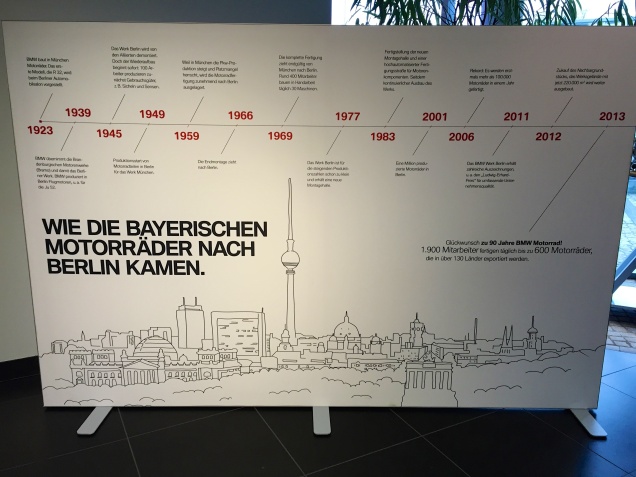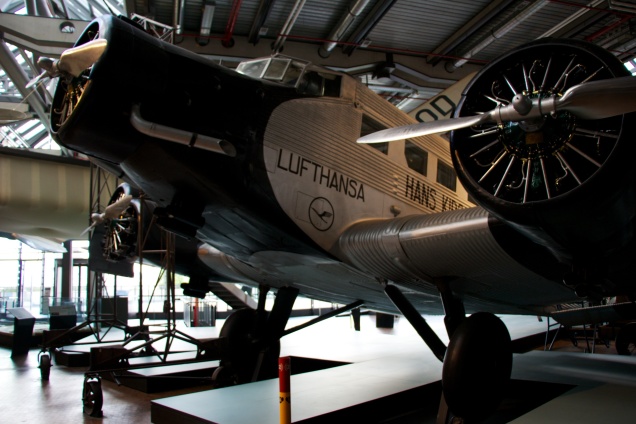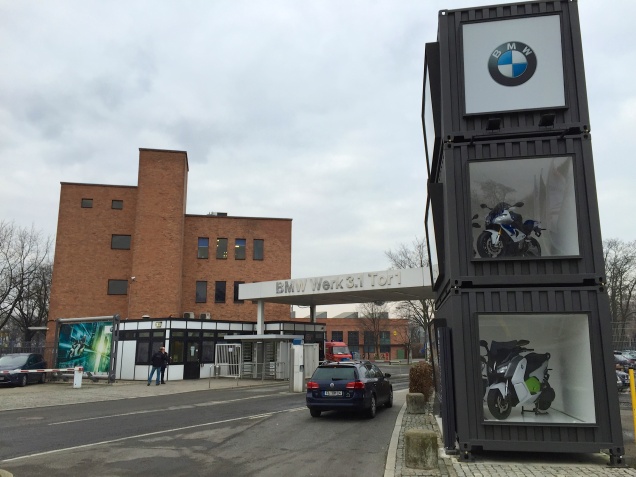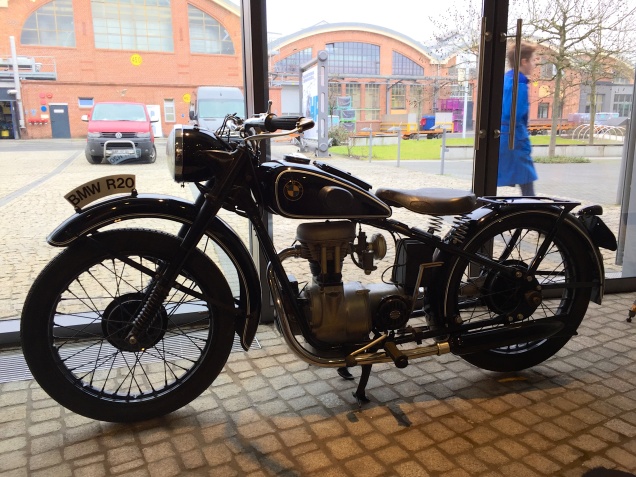
Today, there is not a lot of heavy industry left in Berlin. The city that once was the home of huge factories like Siemens, Borsig, and AEG never recovered from World War II. What wasn’t bombed by the R.A.F. and the US Air Force was dismantled and carried off by the Soviet, French, and British occupying forces, what wasn’t dismantled was either nationalised (in East-Berlin), or was left to die a slow death in the isolation of post-war West-Berlin.
But there’s an exception: BMW’s motorcycle factory in Spandau. Since 1969, BMW has built all its motorbikes at this site (with the exception of the original F-series 1-cylinder bike in the 1990s). Today, some 110.000 bikes leave the factory each year for shipment over the world. That may sound like a lot, but Honda, its largest Japanese competitor, builds five times as many – and that’s down from a peak of 3 million in 1982.
BMW relocated its bike production to Berlin as it was running out of space in its factories in Bavaria. But it had a long history at the site. Originally built as an airplane engine plant by Siemens in 1928 (the factory is adjacent to an area called Siemensstadt, a complex of factories and modernist flats for workers, now a Unesco World Heritage site), it was spun off as ‘Brandenburgische Motoren Werke’ or Bramo in 1936 – after all, the BMW acronym was already being spoken for. The plant built radial engines for planes such as the Junckers Ju52/3m – known throughout Germany as the Tante Ju (Auntie Ju), the German equivalent to the reliable and multipurpose DC3 ‘Dakota’.

By 1939, BMW, by then a motorcycle, aeroplane engine and motor car producer, acquired Bramo and continued building aircraft engines at the site. After World War II, the plant’s equipment was dismantled by the Allies. Low scale production of useful stuff like sickles and scythes continued at the factory, but it returned to full operations in 1949, constructing motor cycle parts for BMWs assembled in Bavaria.

What certainly influenced BMW to bring all motorcycle production to Spandau were the lavish subsidies the Senate granted to anyone wishing to invest in West-Berlin – a sum of 200 million Marks (in 1969 money!) was granted just to redevelop the site. But whatever the original motive – the company has stayed the course, and is even expanding. It’s bought a plot of land adjacent to the factory to build a new assembly hall.

When you take a tour of the factory (6 euros, book through the bmw.de website), you see why they need the extra space: while quaint, the long history of the factory means that it consists of a large number of smallish buildings, some from the early 20th century, and the logistics of keeping everything organised must be a nightmare.
As mentioned, the production numbers at BMW Motorrad (the subbrand’s official name) are not spectacular as far as global bike factories go – but then, as BMW likes to point out, they are a high end brand, and there’s a lot of manual labour in constructing each bike. One of the interesting things you see on the tour is how much of the work is done by hand. There’s robots for the heavy and dangerous stuff, but a lot of the assembly work is done by people who have usually entered the factory as trainees straight out of school, and are quite happy to spend their whole careers there. In Berlin terms, they are good jobs to have.
My lovely Tante Ju! I climbed inside before ending my employment at the museum and took pics as if there were no tomorrow. Sorry, boss. Sometimes a Besucherbetreuerin has to do what a Besucherbetreuerin has to do:-)
Great text, Robin!